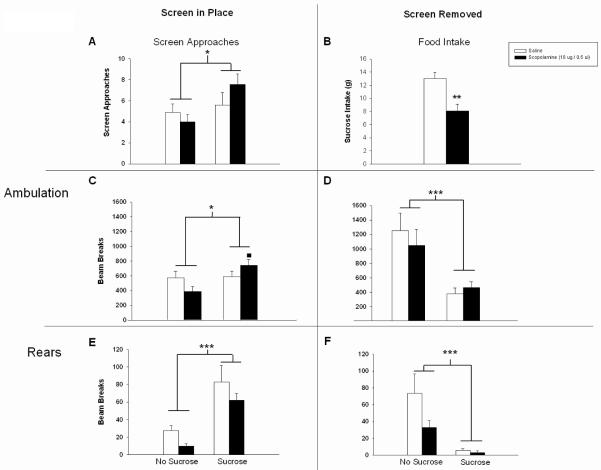Figure 5.
Separation of behaviors emitted in anticipation of food, versus those emitted during access to food, with a wire screen. The left column shows behavior with the screen in place. The right column shows behaviors after the screen was removed, allowing access to the food. Training and testing in the presence of food led to a significant effect on motor behaviors 3 h following intra-Acb infusion (A-F). Scopolamine treatment significantly reduced sucrose pellet intake (B), while the number of screen approaches was unaltered when compared to saline controls (in fact, slightly but not significantly increased) (A). Ambulations behind the screen were significantly enhanced in scopolamine-treated rats trained with sucrose compared to scopolamine-treated rat, no sucrose controls (C). Rearing behavior with the screen in place, as well as with the screen removed, was somewhat suppressed by scopolamine, however no drug x group interaction was found (E & F). Error bars depict one SEM. (*p ≤ 0.05, ** p ≥ 0.01, *** p ≤ 0.001 significantly different from saline; ■ p ≤ 0.05 significantly different from no-sucrose control).

